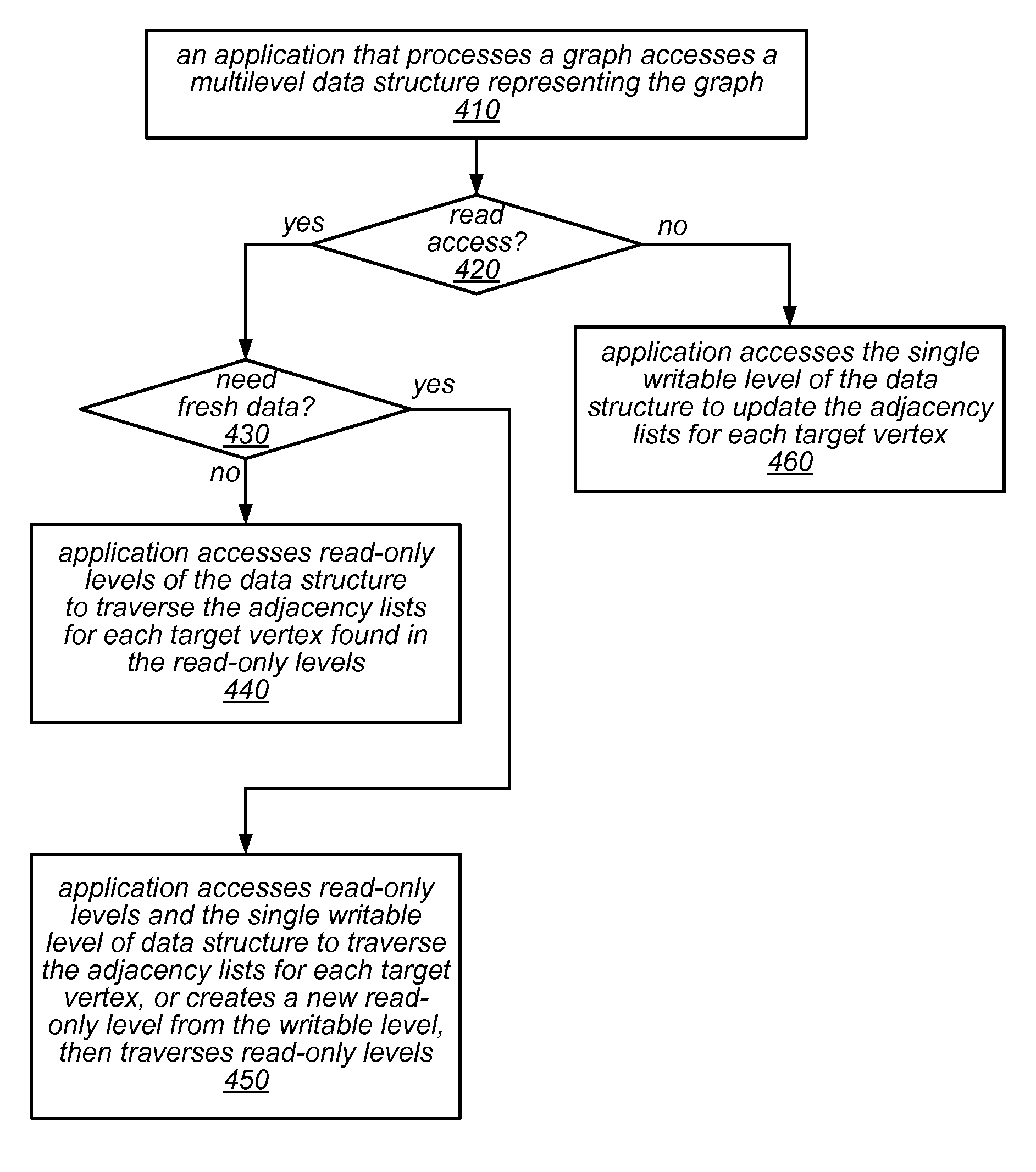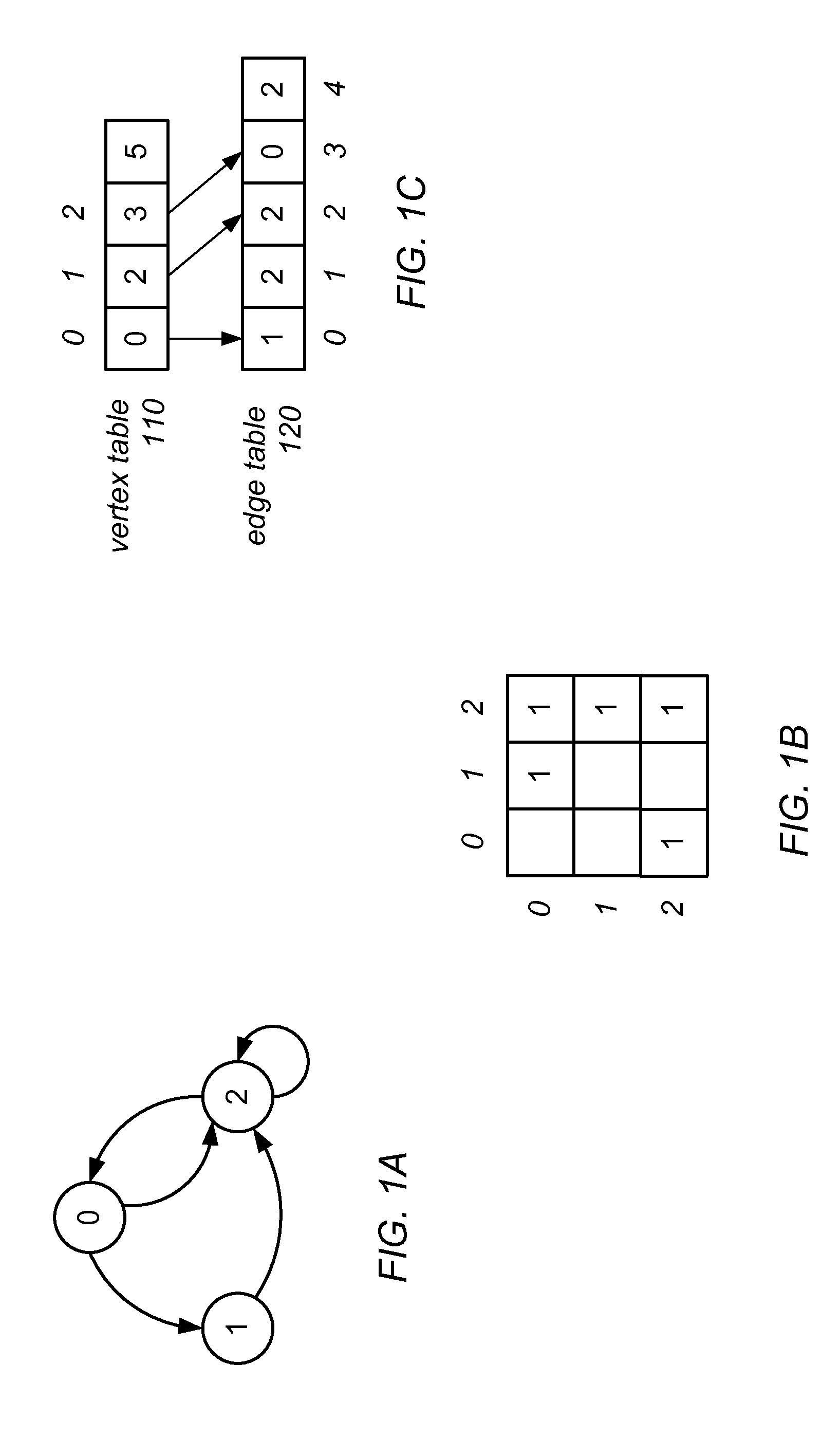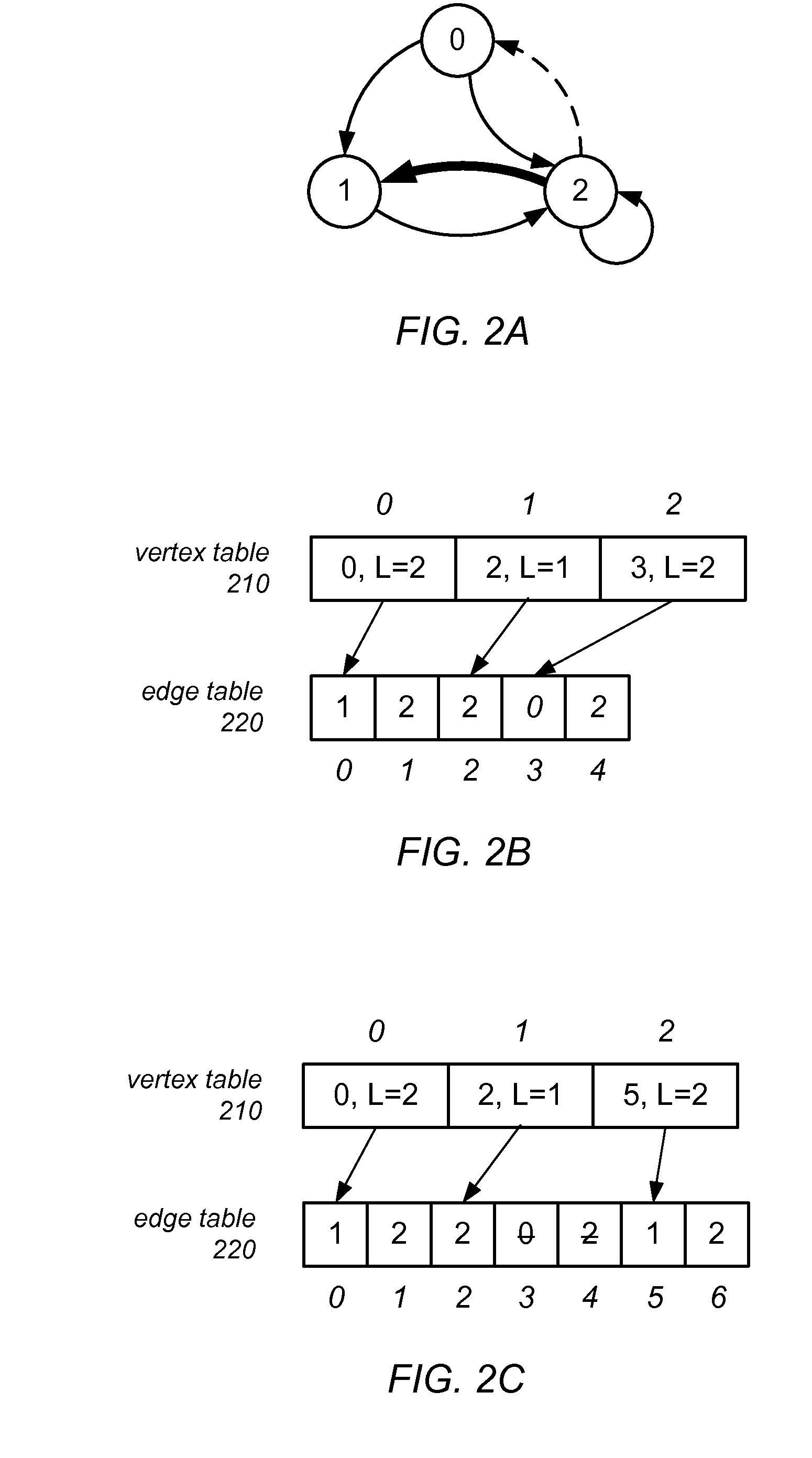Graph Processing Using a Mutable Multilevel Graph Representation
a multi-level graph and graph processing technology, applied in the field of graph analytics, can solve the problems of large amount of memory, csr) representation, and the dynamic nature of today's graphs, and achieve the effect of improving performance and/or space utilization
- Summary
- Abstract
- Description
- Claims
- Application Information
AI Technical Summary
Benefits of technology
Problems solved by technology
Method used
Image
Examples
Embodiment Construction
[0028]The systems and methods described herein may, in various embodiments, be used to implement multi-version data structures suitable for graph analytics. These data structures, which may be built on compressed sparse row (CSR) representations (or CSR-like representations) of graph structures, may be mutable multilevel data structures that enable applications to perform graph analytics or otherwise process graph structures with higher performance and / or space utilization than are possible with existing CSR-like representations. In various embodiments, the mutable multilevel data structures described herein may provide a solution to the problem of mutability in CSR representations that subsumes earlier attempts to add mutability to CSR representations through parameterization. A space-optimized variant of these mutable multilevel data structures may be suitable for use in a large class of real-world algorithms, delivering both good performance and memory usage, while a performance-...
PUM
 Login to View More
Login to View More Abstract
Description
Claims
Application Information
 Login to View More
Login to View More - R&D
- Intellectual Property
- Life Sciences
- Materials
- Tech Scout
- Unparalleled Data Quality
- Higher Quality Content
- 60% Fewer Hallucinations
Browse by: Latest US Patents, China's latest patents, Technical Efficacy Thesaurus, Application Domain, Technology Topic, Popular Technical Reports.
© 2025 PatSnap. All rights reserved.Legal|Privacy policy|Modern Slavery Act Transparency Statement|Sitemap|About US| Contact US: help@patsnap.com



